Why Laser Cutting is a Go-To for High-Precision Projects
In today’s manufacturing landscape, where accuracy, efficiency, and versatility are paramount, laser cutting has emerged as an indispensable tool for high-precision projects. From aerospace components to intricate jewellery designs, laser cutting offers unparalleled precision and adaptability that traditional methods often struggle to match. This article delves into the reasons why laser cutting stands out as the preferred choice for precision-driven applications.
Unmatched Precision and Accuracy
One of the most compelling advantages of laser cutting is its exceptional precision. Modern laser cutters can achieve tolerances as tight as ±0.01 mm, making them ideal for applications where minute deviations can lead to significant issues. This level of accuracy is crucial in industries like aerospace, medical device manufacturing, and electronics, where components must fit together flawlessly and function reliably. The precision is attributed to the focused laser beam, which can be finely controlled to follow intricate patterns and produce detailed designs.
Unlike mechanical cutting methods, which may cause material deformation due to physical contact, laser cutting is a non-contact process. This ensures that the material remains undistorted, preserving its structural integrity and surface finish.
Read in detail about laser cutting and its working in our separate blog.
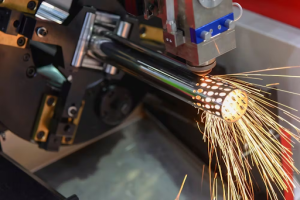
Versatility Across Materials
Laser cutting’s adaptability extends to a wide range of materials, including metals (such as steel, aluminium, and titanium), plastics, wood, glass, and even textiles. This versatility allows manufacturers to use a single machine for diverse applications, reducing the need for multiple specialised tools.
For instance, in the automotive industry, laser cutting is employed to fabricate both metal body panels and plastic interior components. In the fashion industry, designers use laser cutters to create intricate patterns on fabrics, enabling innovative designs that were previously difficult to achieve.
Clean Cuts and Minimal Post-Processing
The high precision of laser cutting results in clean, smooth edges that often require little to no additional finishing. Traditional cutting methods may leave burrs or rough edges that necessitate further processing, adding time and cost to the production cycle. This method minimises these issues, streamlining the manufacturing process and enhancing overall efficiency.
Moreover, the narrow kerf (the width of the cut) produced by laser cutting reduces material waste. This is particularly beneficial when working with expensive materials, as it maximises material utilisation and lowers production costs. For more understanding, please refer to our blog on how laser cutting minimises material waste compared to other methods.
At Kirmell, we offer laser cutting services that ensure minimal material wastage and clean, smooth finishes, no matter the complexity of your design. Our state-of-the-art machines handle everything from simple cuts to intricate engravings with high precision, saving you time and money in post-processing.
Speed and Efficiency
Laser cutting is renowned for its speed, especially when dealing with thin materials or intricate designs. The rapid movement of the laser beam allows for quick execution of complex cuts, significantly reducing production times compared to traditional methods like mechanical sawing or milling.
This efficiency is further enhanced by the integration of laser cutters with computer-aided design (CAD) software. Designs can be quickly uploaded and modified, enabling rapid prototyping and swift transitions from concept to production. This agility is invaluable in industries where time-to-market is critical.
Automation and Integration
Modern laser cutting machines are highly automated and can be seamlessly integrated into existing production lines. This automation reduces the need for manual intervention, minimizing the risk of human error and ensuring consistent quality across production runs.
Additionally, laser cutters can be programmed to perform multiple operations, such as cutting, engraving, and marking, in a single setup. This multifunctionality simplifies the manufacturing process and reduces the need for multiple machines, saving both space and capital investment.
At Kirmell, we offer automated laser cutting solutions tailored for bulk production, ensuring consistent results, minimal waste, and competitive turnaround times. Whether you need a single prototype or thousands of identical units, our process is built for precision and scalability.
Non-Contact Process and Reduced Tool Wear
Since laser cutting is a non-contact process, there is no physical wear on cutting tools, unlike mechanical methods that involve direct contact with the material. This absence of tool wear translates to lower maintenance costs and longer machine lifespans. Furthermore, the non-contact nature of the method eliminates the risk of material contamination or damage caused by tool pressure. This is especially important when working with delicate or sensitive materials that require careful handling.
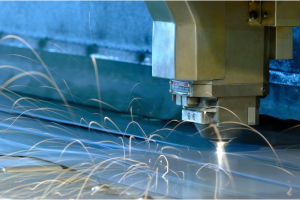
Environmental and Cost Benefits
Laser cutting is not only efficient but also environmentally friendly. The precision of the process minimises material waste, and the absence of cutting fluids or lubricants reduces the generation of hazardous waste. Additionally, many modern laser cutters are designed to be energy-efficient, lowering operational costs and environmental impact.
While the initial investment in laser equipment may be higher than traditional methods, the long-term savings from reduced material waste, lower maintenance costs, and increased production efficiency often outweigh the upfront expenses. Read in more detail about the environmental benefits of laser cutting.
Applications in High-Precision Industries
The advantages of laser cutting make it particularly well-suited for industries that demand high precision and reliability:
- Aerospace: Manufacturing components like turbine blades, structural elements, and intricate brackets that require tight tolerances and high strength-to-weight ratios.
- Medical Devices: Producing surgical instruments, implants, and diagnostic equipment with exacting specifications and biocompatibility requirements.
- Electronics: Fabricating circuit boards, enclosures, and connectors where precision and miniaturisation are critical.
- Jewellery and Fashion: Creating intricate designs and patterns on metals and fabrics, enabling innovative and customised products.
- Automotive: Cutting and shaping components for engines, body panels, and interior features with high accuracy and repeatability.
Check our detailed guide on the top five Industries Benefiting from Laser Cutting Technology.
Conclusion
Laser cutting has revolutionised the manufacturing industry by offering a combination of precision, versatility, and efficiency that traditional methods struggle to match. Its ability to produce clean, accurate cuts across a variety of materials makes it the go-to choice for high-precision projects in numerous industries. As technology continues to advance, this method is poised to play an even more significant role in shaping the future of manufacturing.
Choose Kirmell for Laser Cutting – Trusted Experts in Precision Manufacturing
At Kirmell, we pride ourselves on delivering reliable, high-quality laser cutting services for clients across a broad spectrum of industries. Whether you’re an engineer, designer, artist, or manufacturer, our team works closely with you to understand your needs and deliver tailor-made solutions.
We utilize industry-leading equipment that ensures accuracy, fast turnaround times, and consistency, even for the most complex designs. From prototyping to high-volume production, we are your go-to partner for laser precision work.
Have a project in mind? Contact Kirmell today to discuss your design specifications or get a custom quote. Let’s work together to bring your high-precision ideas to life.
FAQs
What materials can be cut with a laser cutter?
Is laser cutting cost-effective for small batches?
What is the maximum thickness that laser cutters can handle?
Are there design limitations with laser cutting?
Does laser cutting affect the material’s strength?

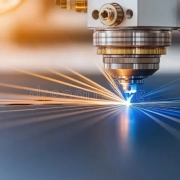
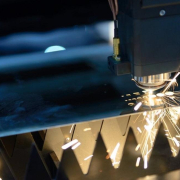
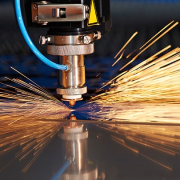
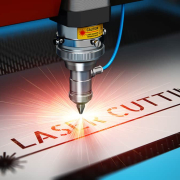
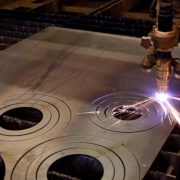
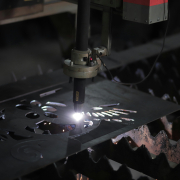
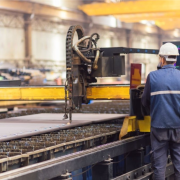
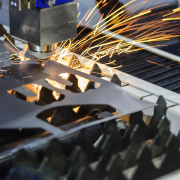


Leave a Reply
Want to join the discussion?Feel free to contribute!